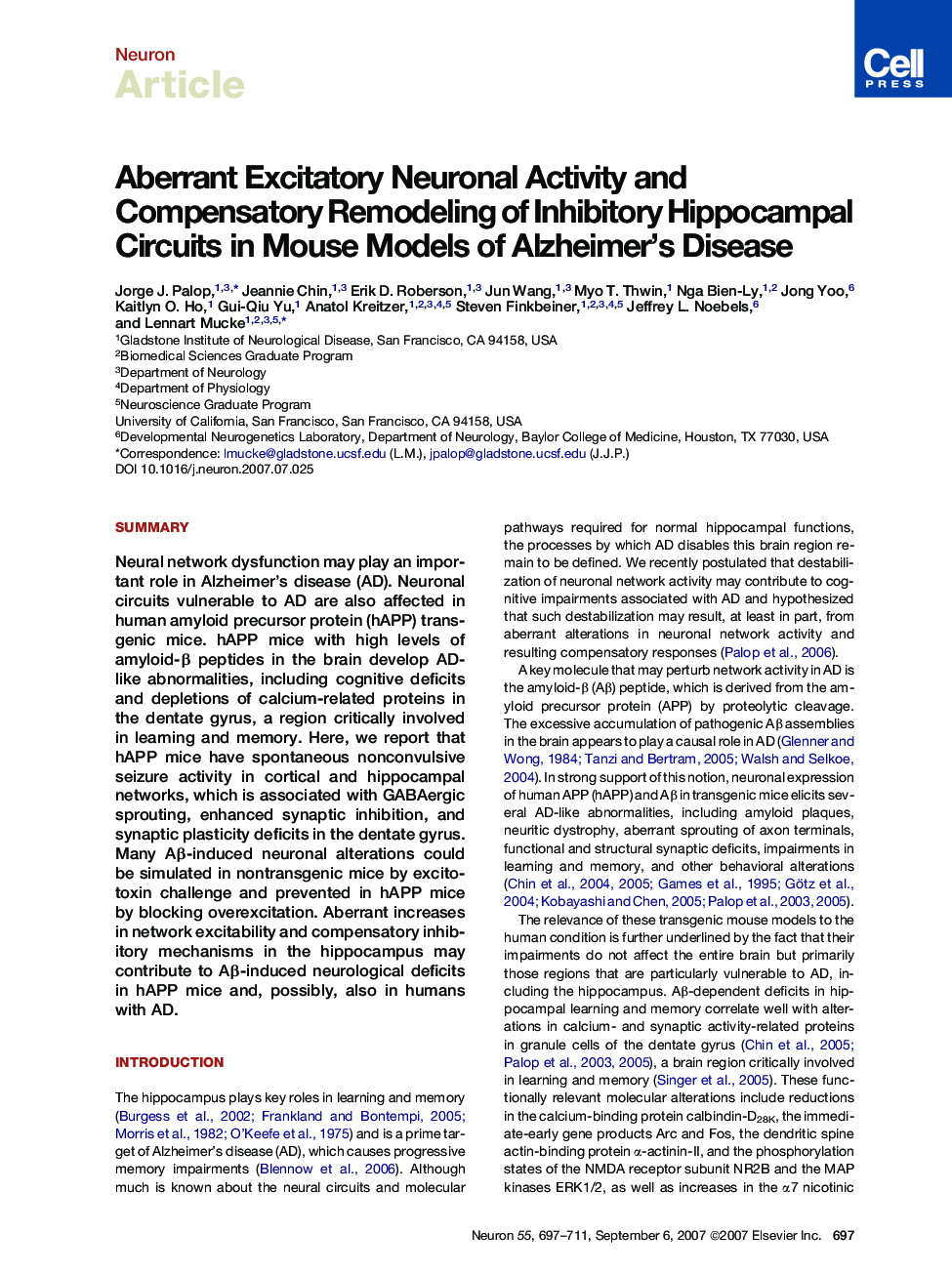| Article ID | Journal | Published Year | Pages | File Type |
|---|---|---|---|---|
| 4322499 | Neuron | 2007 | 15 Pages |
SummaryNeural network dysfunction may play an important role in Alzheimer's disease (AD). Neuronal circuits vulnerable to AD are also affected in human amyloid precursor protein (hAPP) transgenic mice. hAPP mice with high levels of amyloid-β peptides in the brain develop AD-like abnormalities, including cognitive deficits and depletions of calcium-related proteins in the dentate gyrus, a region critically involved in learning and memory. Here, we report that hAPP mice have spontaneous nonconvulsive seizure activity in cortical and hippocampal networks, which is associated with GABAergic sprouting, enhanced synaptic inhibition, and synaptic plasticity deficits in the dentate gyrus. Many Aβ-induced neuronal alterations could be simulated in nontransgenic mice by excitotoxin challenge and prevented in hAPP mice by blocking overexcitation. Aberrant increases in network excitability and compensatory inhibitory mechanisms in the hippocampus may contribute to Aβ-induced neurological deficits in hAPP mice and, possibly, also in humans with AD.
